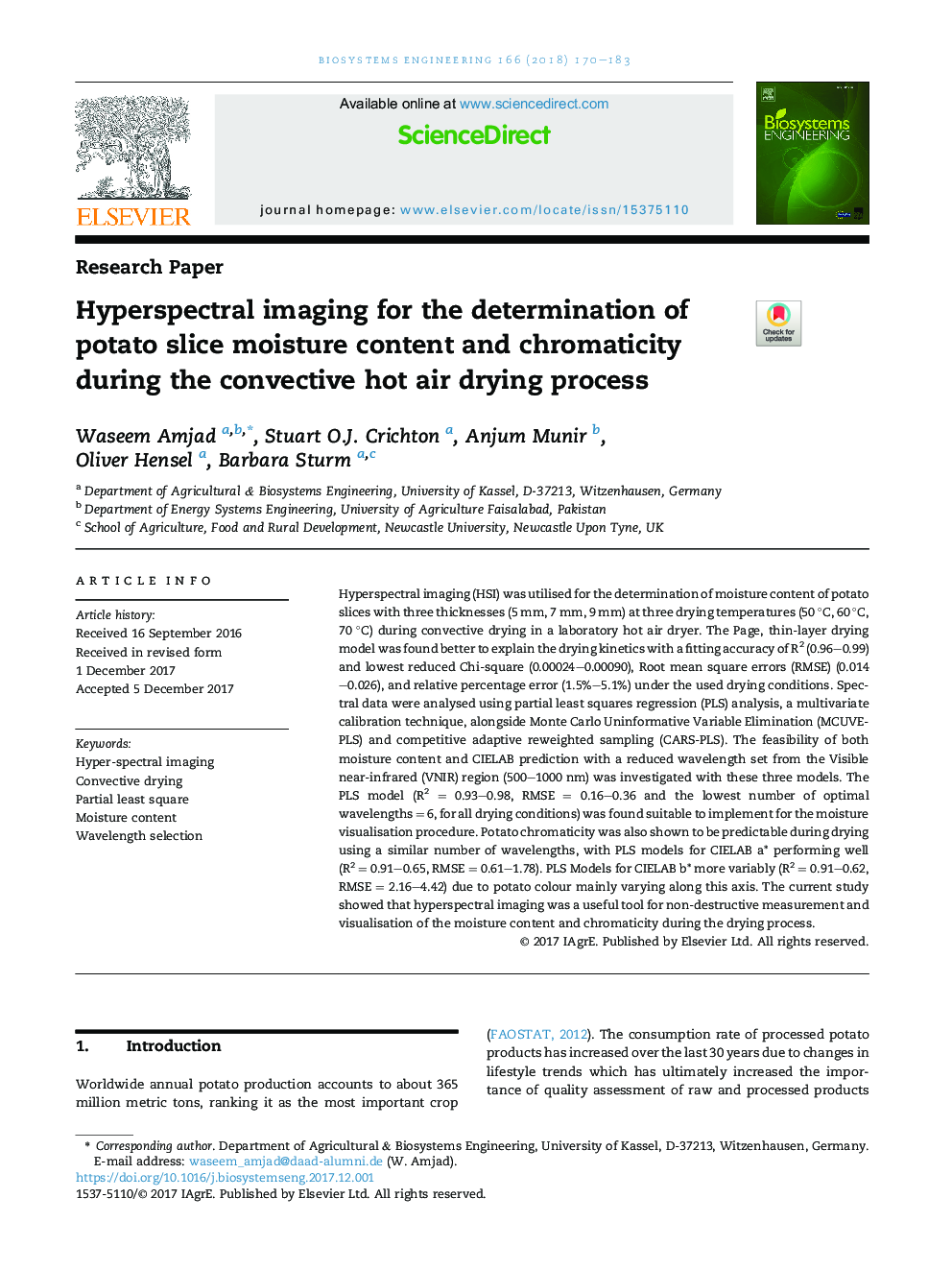| Article ID | Journal | Published Year | Pages | File Type |
|---|---|---|---|---|
| 8054859 | Biosystems Engineering | 2018 | 14 Pages |
Abstract
Hyperspectral imaging (HSI) was utilised for the determination of moisture content of potato slices with three thicknesses (5 mm, 7 mm, 9 mm) at three drying temperatures (50 °C, 60 °C, 70 °C) during convective drying in a laboratory hot air dryer. The Page, thin-layer drying model was found better to explain the drying kinetics with a fitting accuracy of R2 (0.96-0.99) and lowest reduced Chi-square (0.00024-0.00090), Root mean square errors (RMSE) (0.014-0.026), and relative percentage error (1.5%-5.1%) under the used drying conditions. Spectral data were analysed using partial least squares regression (PLS) analysis, a multivariate calibration technique, alongside Monte Carlo Uninformative Variable Elimination (MCUVE-PLS) and competitive adaptive reweighted sampling (CARS-PLS). The feasibility of both moisture content and CIELAB prediction with a reduced wavelength set from the Visible near-infrared (VNIR) region (500-1000 nm) was investigated with these three models. The PLS model (R2 = 0.93-0.98, RMSE = 0.16-0.36 and the lowest number of optimal wavelengths = 6, for all drying conditions) was found suitable to implement for the moisture visualisation procedure. Potato chromaticity was also shown to be predictable during drying using a similar number of wavelengths, with PLS models for CIELAB a* performing well (R2 = 0.91-0.65, RMSE = 0.61-1.78). PLS Models for CIELAB b* more variably (R2 = 0.91-0.62, RMSE = 2.16-4.42) due to potato colour mainly varying along this axis. The current study showed that hyperspectral imaging was a useful tool for non-destructive measurement and visualisation of the moisture content and chromaticity during the drying process.
Keywords
Related Topics
Physical Sciences and Engineering
Engineering
Control and Systems Engineering
Authors
Waseem Amjad, Stuart O.J. Crichton, Anjum Munir, Oliver Hensel, Barbara Sturm,
